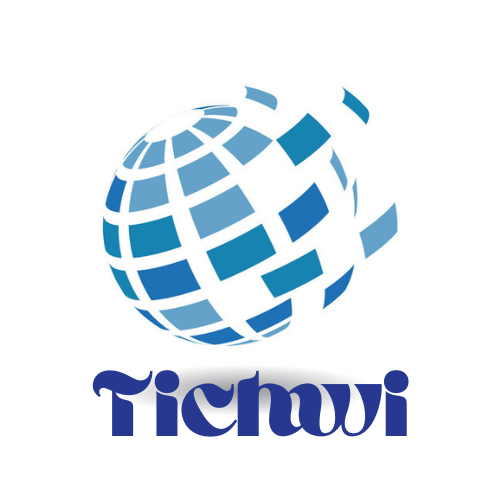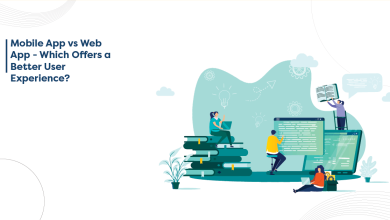Creating a Seamless User Experience with Shopify Theme Development
In the fast-paced world of e-commerce, a seamless user experience (UX) is a crucial element for success. As an online retailer, your website is often the first point of contact between your business and potential customers. A well-crafted, intuitive user experience captivates visitors and converts them into loyal customers. Achieving this level of user satisfaction is possible through thoughtful theme development on Shopify, a popular e-commerce platform. Whether you are a budding entrepreneur or an established brand looking to elevate your online presence, partnering with the Best Shopify Theme Development Company can significantly enhance your ability to create an engaging and user-friendly digital storefront.
The Importance of User Experience in E-Commerce
Before delving into the specifics of Shopify theme development, it’s essential to understand why user experience is paramount in e-commerce. Users have high expectations in a landscape where countless options are just a click away. They demand websites that are visually appealing and easy to navigate, load quickly, and offer a secure and seamless transaction process.
A positive user experience directly correlates with increased conversion rates and customer retention. According to a study by Adobe, 38% of people will only engage with a website if the content or layout is attractive. Moreover, a one-second delay in page load time can result in a 16% decrease in customer satisfaction, according to Google. These statistics highlight the critical role UX plays in the success of an e-commerce venture.
Understanding Shopify Theme Development
Shopify, a robust and user-friendly e-commerce platform, empowers businesses to create and manage online stores. One of the key features contributing to Shopify’s popularity is its theme system, which allows users to customize the look and feel of their stores. Shopify themes are pre-designed templates that determine an online store’s layout, style, and functionality.
Shopify themes can be free or paid, and users can create custom themes tailored to their unique brand identity and requirements. Shopify uses its template language called Liquid, making it accessible to users with varying levels of technical expertise. While Shopify provides a range of themes, the real power lies in the ability to customize and develop themes to suit specific business needs.
Read Also: How Shopify Benefits Manufacturers Selling Online
Critical Elements of Shopify Theme Development
- Responsive Design
In the era of mobile-first browsing, responsive design is no longer a luxury but a necessity. Shopify themes must be optimized for various devices, including desktops, tablets, and smartphones. A responsive design ensures that your online store looks and functions seamlessly across different screen sizes, providing a consistent and enjoyable user experience.
- Intuitive Navigation
User-friendly navigation is at the core of a seamless user experience. A well-organized menu structure, clear product categories, and intuitive search functionality contribute to easy navigation. Shopify theme development should prioritize a logical layout that guides users from landing on the homepage to completing a purchase.
- Fast Loading Times
Page speed is a critical factor influencing user satisfaction and search engine rankings. Slow-loading websites can result in high bounce rates and abandoned carts. Shopify theme developers must optimize images, leverage browser caching, and minimize unnecessary code to ensure swift loading times. The need for speed extends to desktop and mobile versions of the website.
- Aesthetic Appeal
While functionality is paramount, the visual appeal of your online store should be noticed. Aesthetically pleasing design creates a positive first impression and enhances brand perception. Shopify themes should align with your brand identity, utilizing a color scheme, typography, and imagery that resonate with your target audience.
- Customization Capabilities
The ability to customize a theme to align with your brand’s unique personality is a distinguishing feature of Shopify. Whether you choose a pre-designed theme or opt for custom development, the theme should offer flexibility regarding color schemes, font choices, and layout options. Customization extends to product pages, checkout processes, and other essential elements of the user journey.
- SEO-Friendly Structure
Search engine optimization (SEO) drives organic traffic to your Shopify store. A well-optimized theme includes customizable meta tags, clean and crawlable code, and the ability to create SEO-friendly URLs. Additionally, the theme should facilitate the integration of alt text for images and other on-page SEO elements.
- Secure and Trustworthy
In the age of cyber threats, user trust is paramount. A secure website not only protects customer data but also enhances the credibility of your brand. Shopify themes should adhere to best web security practices, including using secure sockets layer (SSL) certificates and compliance with Payment Card Industry Data Security Standard (PCI DSS) requirements.
Best Practices for Shopify Theme Development
Now that we’ve outlined the critical elements of Shopify theme development let’s explore some best practices to ensure the creation of a seamless user experience.
- Conduct User Research
Understanding your target audience is the foundation of effective theme development. Conduct thorough user research to identify their preferences, behaviors, and pain points. This knowledge will inform design decisions, ensuring that the theme caters to your customer’s specific needs and expectations.
- Optimize for Mobile
Given the prevalence of mobile commerce, prioritize mobile optimization in your theme development process. Test the theme on various devices to ensure a consistent and enjoyable experience. Consider mobile-specific features like touch-friendly navigation and accelerated mobile pages (AMP) to enhance the mobile user experience.
- Streamline Checkout Process
The checkout process is a critical juncture in the user journey, and any friction at this stage can lead to abandoned carts. Streamline the checkout process by minimizing form fields, providing guest checkout options, and displaying clear progress indicators. The goal is to make the transaction process as efficient and transparent as possible.
- Prioritize Accessibility
Web accessibility is an ethical consideration and, in many regions, a legal requirement. Ensure your Shopify theme complies with accessibility standards, such as the Web Content Accessibility Guidelines (WCAG). This includes providing alternative text for images, ensuring keyboard navigation, and designing for color contrast to accommodate users with visual impairments.
- Leverage Shopify Sections
Shopify Sections empower users to customize the content of their pages without delving into the intricacies of code. As a theme developer, leverage the power of Sections to offer users a modular and user-friendly way to personalize their online store. This approach enhances flexibility and ease of use, allowing users to make changes without extensive technical knowledge.
- Implement Lazy Loading
To optimize page speed, implement lazy loading for images. Lazy loading defers the loading of non-essential pictures until they are about to come into the user’s viewport. This results in faster initial page loads and a smoother user experience. Shopify themes should incorporate lazy loading as a standard practice to enhance performance.
- Test Extensively
Thorough testing is a non-negotiable step in Shopify theme development. Test the theme across browsers, devices, and screen sizes to identify and address compatibility issues. User testing is equally crucial to gather feedback on the overall user experience. Conduct A/B testing for specific elements, such as call-to-action buttons and navigation menus, to optimize for conversion.
Challenges and Solutions in Shopify Theme Development
While Shopify provides a robust platform for e-commerce, theme development comes with its challenges. Addressing these challenges is critical to delivering a seamless user experience.
- Balancing Customization and Performance
As businesses seek unique branding and design elements, theme developers often face balancing customization with performance. Custom features can introduce complexity and potentially slow down the website. The solution lies in optimizing code, leveraging caching mechanisms, and prioritizing performance during development.
- Cross-Browser Compatibility
Ensuring a Shopify theme functions consistently across various browsers is a common challenge. Divergent rendering engines and browser-specific quirks can lead to discrepancies in the user experience. Rigorous testing and adherence to web standards are essential to address cross-browser compatibility issues and deliver a sealess experience to users regardless of their chosen browser.
- Keeping Up with Updates
Shopify regularly releases updates to its platform, including changes to its theme architecture. Theme developers must stay abreast of these updates to ensure compatibility and take advantage of new features. Regularly updating themes also addresses security vulnerabilities, enhancing the overall stability and reliability of the online store.
- Addressing Mobile-First Challenges
While mobile optimization is crucial, developing a theme that excels in desktop and mobile environments can be challenging. Designing with a mobile-first approach and using responsive design principles can mitigate these challenges. Testing on real devices and simulating various network conditions will also help identify and address mobile-specific issues.
Read Also: Is Shopify Still Profitable for ecommerce Startups?
Conclusion
Creating a seamless user experience with Shopify theme development is not just about aesthetics; it’s about understanding your audience and optimizing every step of the user journey. From the initial landing page to the final checkout, each interaction should be intuitive, visually appealing, and efficient.
Shopify’s theme development offers a powerful toolkit for achieving these objectives. By focusing on responsive design, intuitive navigation, fast loading times, and other vital elements, businesses can differentiate themselves in the competitive e-commerce landscape.
Embracing best practices, addressing challenges, and staying informed about the latest developments in Shopify theme development is essential for building and maintaining a successful online store. As user expectations evolve, the commitment to delivering an exceptional user experience through thoughtful theme development becomes even more critical for sustained success in e-commerce.
FAQ’s
Q1: Why is a seamless user experience crucial for e-commerce success?
A1: In the competitive landscape of e-commerce, a seamless user experience is crucial because it directly impacts customer satisfaction and conversion rates. A well-crafted and intuitive user experience not only captivates visitors but also turns them into loyal customers, fostering trust and repeat business.
Q2: How does Shopify contribute to achieving a high level of user satisfaction?
A2: Shopify, as a popular e-commerce platform, provides robust tools and features for theme development. Through thoughtful customization and design, businesses can create a visually appealing and user-friendly online store. Shopify’s flexibility and accessibility, coupled with its theme system, empower users to tailor their websites to meet the unique needs of their audience.
Q3: What are the key elements of Shopify theme development for a seamless user experience?
A3: The key elements of Shopify theme development for a seamless user experience include responsive design for various devices, intuitive navigation, fast loading times, aesthetic appeal, customization capabilities, SEO-friendly structure, and a focus on security and trustworthiness.
Q4: How can a business ensure its Shopify theme development aligns with its brand identity?
A4: Businesses can ensure alignment with their brand identity by prioritizing customization capabilities in their Shopify themes. Whether choosing pre-designed themes or opting for custom development, the ability to customize color schemes, font choices, and layout options is essential for creating a cohesive and branded online presence.
Q5: What challenges might businesses face in Shopify theme development, and how can they be addressed?
A5: Businesses may encounter challenges in balancing customization and performance, ensuring cross-browser compatibility, keeping up with platform updates, and addressing mobile-first considerations. These challenges can be addressed by optimizing code for performance, rigorous testing, staying informed about updates, and adopting a mobile-first approach in design. Regularly updating themes is also crucial for maintaining security and stability.




